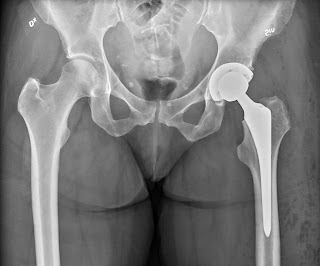Sunday, December 15, 2019
The Pros and Cons of Anterior (From the Front) Hip Replacement Surgery
As the orthopedic consultant for the State of Hawaii Department of Corrections, Dr. John Frauens handles inmates’ structural health problems. Dr. John Frauens’ professional interests include innovative surgeries such as anterior hip replacement, in which the incisions are made from the front side rather than the rear (as in older techniques). Replacing the joint from the forward side of the patient offers several key advantages:
- Reduced major muscle damage. The front side of the hip has fewer muscles than the back, allowing surgeons to separate them as they cut. This extra room avoids the complications of slicing through muscle tissue and removing it from the bone.
- Less pain after the operation. Cutting muscles is painful, so avoiding doing so causes less discomfort.
- Quicker recovery. Unlike the long healing time of conventional hip surgery, anterior hip replacements let patients move and bear weight when they are comfortable. These patients can walk by themselves or with assistance sooner than in traditional hip replacements, and thus spend less time in the hospital.
- Decreased risk of dislocation. The anterior procedure leaves the soft tissue and muscles that hold the hips in place intact. This lowers risk of dislocation, and allows patients to safely bend over or cross their legs. With conventional surgery, patients must wait 6-8 weeks to perform these actions, and may be advised to never over-rotate their hips.
There are also a number of disadvantages to this approach. For instance, the procedure is a greater test of surgical skills, and may take longer to learn. Further, patients with large amounts of fat or over-developed muscles may not be suited to anterior replacement. There is also a slight (1 percent or less) chance that incisions could damage critical nerves. Finally, it may take longer for wounds to heal for large patients or those with a lot of abdominal fat.
Thursday, April 4, 2019
Artificial Cartilage Treatment for Knee Problems
Backed by more than three decades of clinical experience as an orthopedic surgeon, Dr. John Frauens consults with the Hawaii Department of Public Safety to guide patient care for the state’s incarcerated population under the Division of Corrections. Dr. John Frauens also founded the medical device company SoftJoint, which specializes in developing synthetic cartilage for joint replacements.
Knee replacements are becoming one of the most commonly performed surgical procedures in the United States. While effective, the procedure is extremely invasive, and many patients would prefer more moderate treatment options. New advances in artificial cartilage may provide an alternative to complete joint replacement.
Rather than removing the entire joint, medical researchers are investigating methods that replace worn cartilage with plastic or gel inserts that cushion the knee joint and reduce pain. Due to the complication of replicating all of the characteristics of human cartilage, many of these alternatives are still in the trial phase. However, results have been promising, and researchers are getting closer to creating a robust substitute for cartilage.
Subscribe to:
Posts (Atom)
